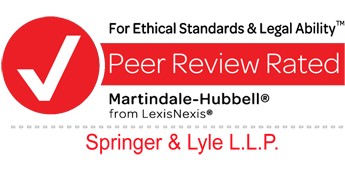Common Legal Terms in Personal Injury Cases and What They Mean~3 min read
When dealing with a personal injury case, you might come across a variety of legal terms that can feel unfamiliar or confusing. Understanding these terms can help you approach your case with greater confidence. Below, we explain some common legal terms you might hear during a personal injury claim.
Plaintiff
The plaintiff is the person who brings a lawsuit. In personal injury cases, this is typically the injured individual seeking compensation for damages such as medical bills, lost wages, or pain and suffering.
Defendant

The defendant is the person or entity being sued. This could be an individual, a business, or an insurance company alleged to have caused the plaintiff’s injuries and damages through negligence or wrongdoing.
Negligence
Negligence refers to a failure to exercise reasonable care, resulting in harm to another person. For example, a driver running a red light and causing an accident could be considered negligent.
Liability
Liability is the legal responsibility for one’s actions or inactions. In a personal injury case, establishing liability means proving that the defendant was responsible for the injuries sustained by the plaintiff.
Damages
Damages refer to the monetary compensation sought or awarded in a personal injury case. There are two main types:
- Economic Damages: These include tangible losses such as medical expenses, lost wages, and property damage.
- Non-Economic Damages: These cover intangible losses such as physical pain and mental anguish, scarring and disfigurement and, permanent impairment.
Statute of Limitations
The statute of limitations is the time limit within which a lawsuit must be filed. In Texas, personal injury cases “generally” have a two-year statute of limitations from the date of the occurrence. There are several exceptions to the general rule, however. Because of that, it’s wise to consult a qualified legal professional as soon as possible.
Comparative Fault
Comparative fault refers to the concept that the plaintiff’s own actions may have contributed to the accident. Texas follows a modified comparative fault rule, meaning you can still recover damages as long as you are less than 51% at fault.
Settlement
A settlement is an agreement reached between the plaintiff and defendant to resolve the case without going to trial. Settlements often result in faster resolutions and less expense for both parties.
Contingency Fee
A contingency fee is the payment structure often used by personal injury attorneys. Instead of paying upfront, the attorney’s fee is a percentage of the settlement or award, typically between 30% and 40%.
Demand Letter
A demand letter is a formal document sent by the plaintiff’s attorney to the defendant or their insurance company. It usually includes multiple exhibits and outlines the plaintiff’s claims and makes a demand for damages.
Deposition
A deposition is a sworn, out-of-court testimony given by a witness or party involved in the case. It is used to gather evidence and prepare for trial.
Contact Springer & Lyle
Understanding these common legal terms can give you the confidence to make informed decisions about your personal injury case. The experienced attorneys at Springer & Lyle are ready to provide the support and expertise you need to handle your case effectively. Contact us today at 940.370.4033 to schedule a free consultation and take the first step toward resolving your case.





